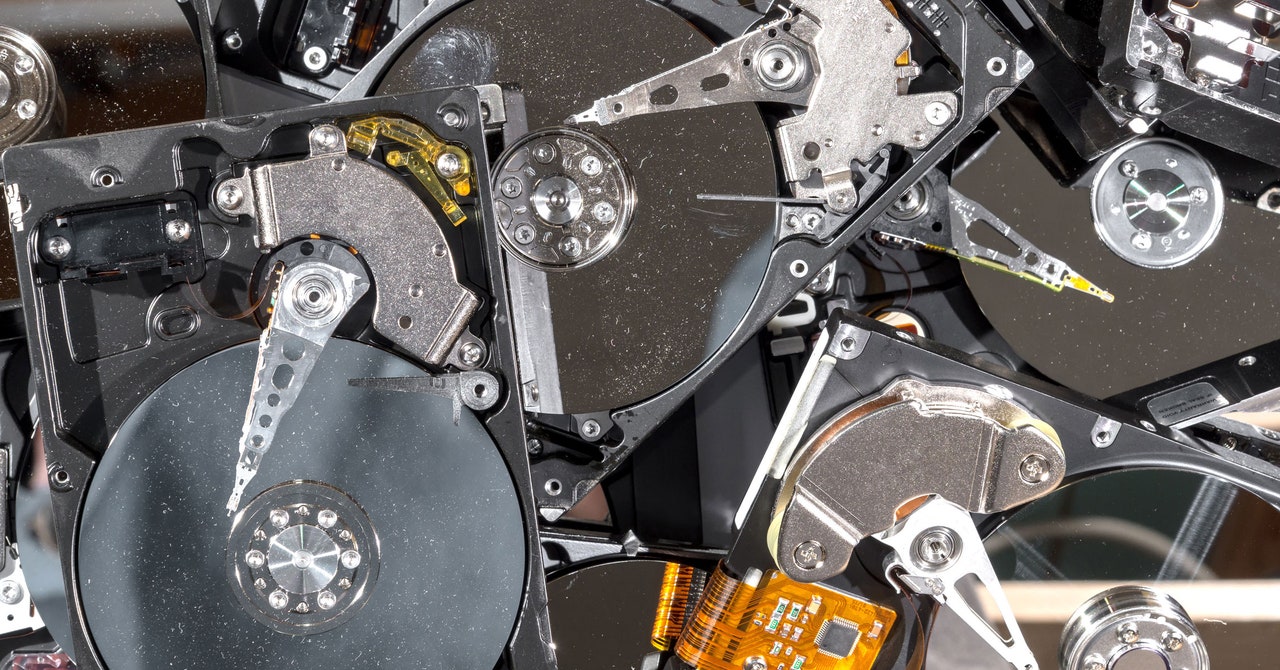
In 2019 these stakeholders published a report identifying a host of potential strategies, including wiping and reusing entire hard disk drives, removing and reusing the magnet assemblies, grinding up old hard drive magnets and using the powder to manufacture new ones, and extracting purified rare-earth elements from shredded drives. Each of these strategies has its own challenges—removing magnet assemblies by hand is labor intensive; extracting rare earths from technology can be chemical- or energy-intensive and produce significant waste—and for any of them to be scaled up, there needs to be buy-in from numerous actors across global supply chains.
Making even the relatively minor supply chain adjustments needed to place used or recycled rare-earth magnets inside new drives “is difficult,” Jin said. “And especially when you’ve got to start from some small amount with a new technology.”
Still, some companies have begun taking the first steps. In 2018, Google, hard drive maker Seagate, and electronics refurbisher Recontext (formerly Teleplan) conducted a small demonstration project that involved removing the magnet assemblies from six hard disk drives and placing them in new Seagate drives. This demonstration, Frost says, was the “catalyst” for the larger 2019 study in which 6,100 magnet assemblies were extracted from Seagate hard drives in a Google data center before being inserted into new hard drives in a Seagate manufacturing facility. Frost, who led the 2019 study, believes it is the largest demonstration of its kind ever done.
The results, which will be published in a forthcoming edition of the journal Resources, Conservation, and Recycling, not only showed that rare-earth magnets could be harvested and reused at larger scale, but that there were significant environmental benefits to doing so. Overall, reused magnet assemblies had a carbon footprint 86 percent lower than new ones, according to the study. Frost says that this estimate conservatively took into account the energy mix of the local power grid where the data center operated. Considering Google’s near round-the-clock renewable energy usage at this particular data center, the carbon footprint of the reused magnets was even lower.
Google declined to say whether it has any follow-up projects in the works but pointed Grist toward its publicly announced goal of developing a scalable rare-earth magnet recycling process. Ines Sousa, the supplier environmental impact program manager at Google and a coauthor on the new study, says there are a few challenges that still need to be overcome before that’s a reality.
These include the need for extreme cleanliness during magnet recycling “as modern hard drives are very sensitive to small particles,” and the fact that hard drives are constantly changing, resulting in new magnet designs every few years.
“There is an opportunity to make magnet design constant between generations so the reuse process can scale,” Sousa said.
Seagate spokesperson Greg Belloni told Grist that the company is “committed to working to solve the complexity” of rare-earth recycling in “close collaboration with customers.” Another of its customers, computer maker Dell, is exploring a different recycling approach.
In 2019, Dell launched a pilot program with Seagate and Recontext to harvest magnets from computer hard drives (collected via a Dell take-back program), crush them up, extract the rare earths, and use them to make new magnets. To date, some 19,000 pounds of rare-earth magnets have been harvested for recycling via this collaboration. The project “remains a pilot program as we continue to look for ways to scale within our own operations,” Dell spokesperson Mel Derome told Grist.
While it may be years before rare-earth magnets are being recycled en masse using any approach, the Biden administration could help to accelerate these efforts. Through the Critical Materials Institute at Ames National Laboratory, the federal government already funds several projects focused on developing cleaner and more efficient processes for recycling rare-earth elements from magnets. In a recent report on strengthening supply chain resilience, administration officials wrote that the 4,000 US government-operated data centers represent a “near-term opportunity” to harvest rare-earth magnets using this type of federally funded research and development.


